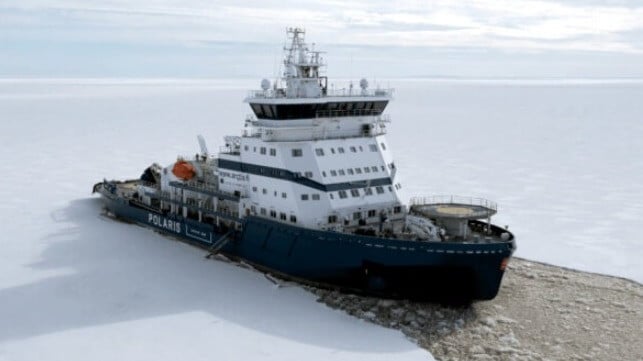Finland Awarded €91M from EU for New Icebreaker and Transport Projects

Calling it the “jewel of the projects that received EU funding,” Finland announced it was awarded money from the European Commission for its new Baltic Class B icebreaker, along with other key transport projects. They said the investments will play a key role in Finland’s foreign trade, economy, future, and security.
Finland’s icebreaker fleet consists of eight vessels, the oldest of which is Voima, which was delivered in 1954. While it was rebuilt in 1978-1979, at age 70, it is considered the world’s oldest working icebreaker and Finland’s only Class B vessel. Finland has a three-tier ranking system, with A being the largest and most powerful and C being similar to large ice-strengthened tugs. The project, which is already underway and was proposed to the EU, calls for replacing Voima with what Aker is calling a B+ vessel.
The project will receive €42.22 million ($49.4 million) from the EU out of a total of €59.6 million ($69.75 million) awarded to Finnish government projects and a total of €91 million ($106.5 million) for public and private projects in Finland. The European Commission announced the selections on July 2, awarding a total of €2.7 billion ($3.1 billion) in projects out of over €9 billion ($10.5 billion) in applications.
“We applied for EU funding for critical infrastructure – and we got it,” said Minister of Transport and Communications Lulu Ranne. “Especially the funding secured for the new icebreaker and main road 21 will both strengthen Finland’s security of supply and military mobility and facilitate foreign trade.”
The EU envisions a Trans-European Transport Network of which the Finnish projects will play a key role. It will be links of railways, inland waterways, roads, ports, airports, urban nodes, and multimodal freight terminals. Member states contribute 50 to 70 percent of the cost of the projects, with the European Commission providing critical support.
The renewal of Finland's icebreaking fleet will begin, the minister reports, with the new icebreaker Aino, for which a separate decision has been made by the Government's Economic Policy Committee. Construction is scheduled to begin in 2026 and will take approximately 36 months. Work began in April, with Aker awarded the contract to design at least two concepts for the intermediate-class icebreaker.
“The ongoing icebreaking season has yet again demonstrated how the ice fields tend to be more dynamic and heavily fragmented during mild winters, including wide slush barriers and areas of open water,” writes Aker. “The prevailing ice conditions can thus be a major obstacle to commercial shipping and present challenges for the assisting icebreakers even when the ice cover is not particularly thick. This will require new thinking regarding the design criteria for the next generation of icebreakers.”
The Finnish project is being coordinated with Sweden and Estonia, but the vessel will be tailored to Finland’s unique challenges. It will be an intermediate vessel with high maneuverability, as the idea is to deploy the vessel to the Bothnian Bay in early winter and move to the Bothnian Sea or the Gulf of Finland during the peak season.
Aker reports it is evaluating three alternative fuels, liquid biogas, methanol, and ammonia, for their technological maturity and feasibility. Three propulsion alternatives are being considered, including twin- and triple-azimuth alternatives, and the novel concept of combining shaft lines in the stern with azimuthing propulsion in the bow. It will test at least two variants of the design and is scheduled to deliver the concepts to the government by early 2026. The vessel will be commissioned by 2029.
Finland is considered to be at the forefront of icebreaker design, construction, and operation. It has partnered with Canada and the United States for the development of a new generation of vessels.
